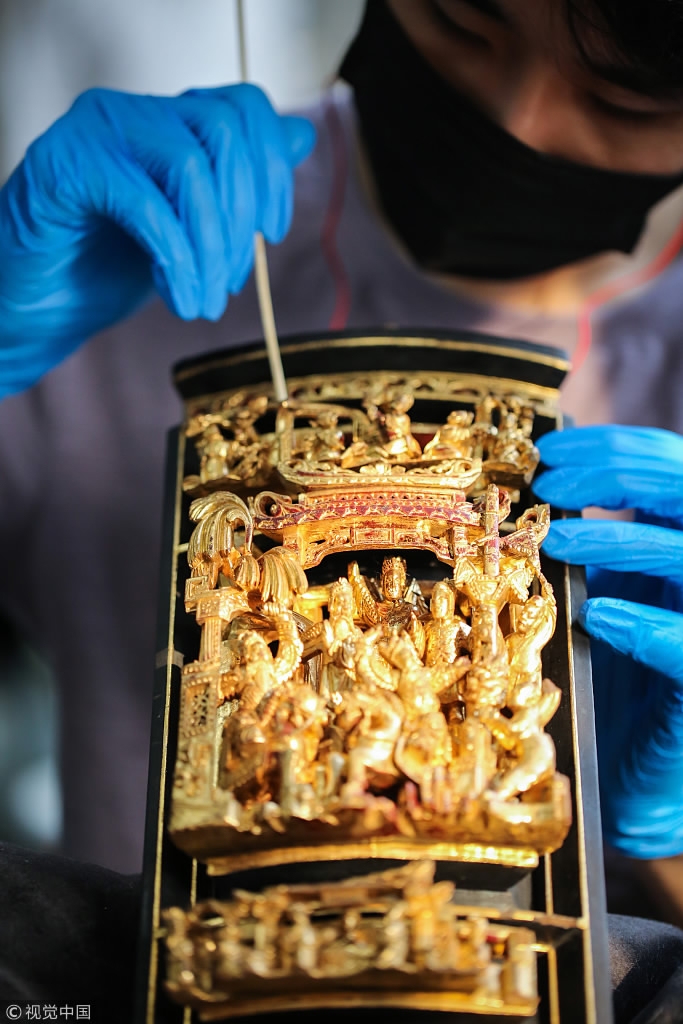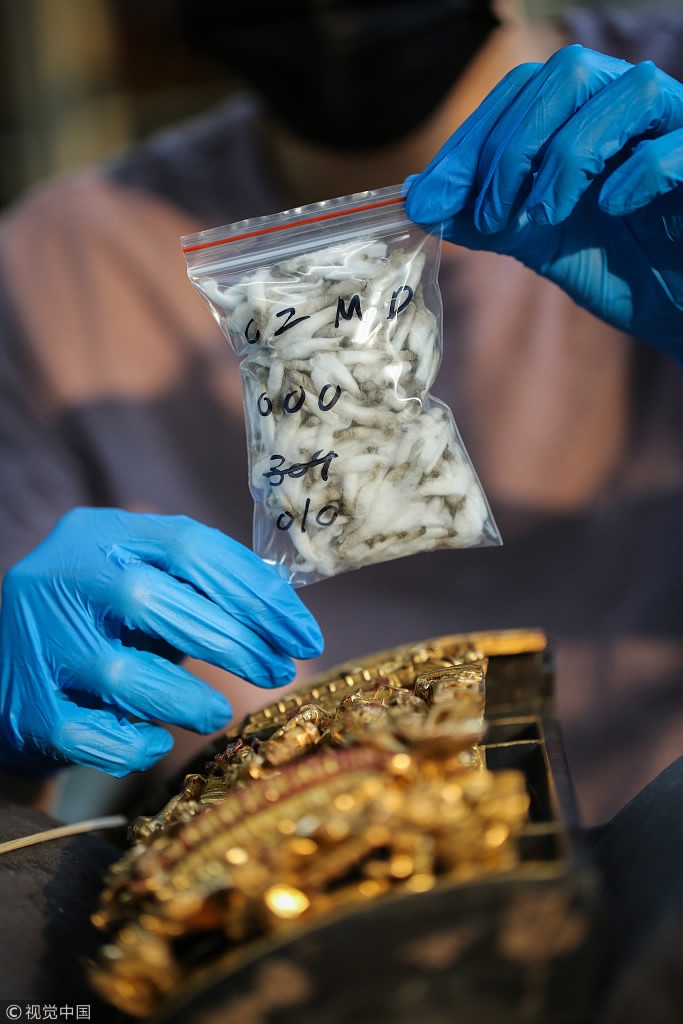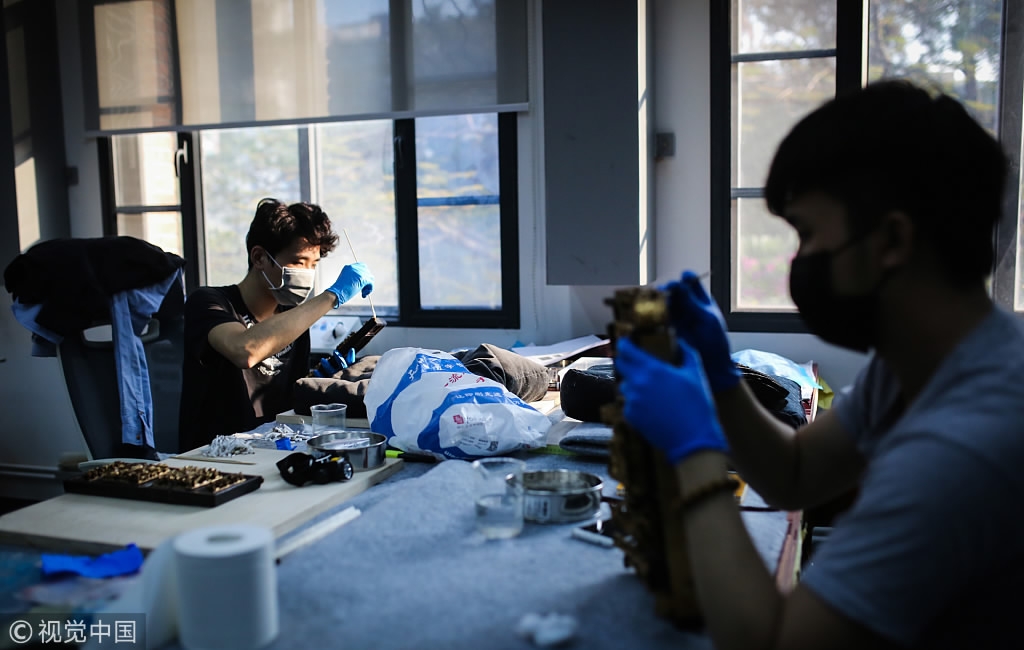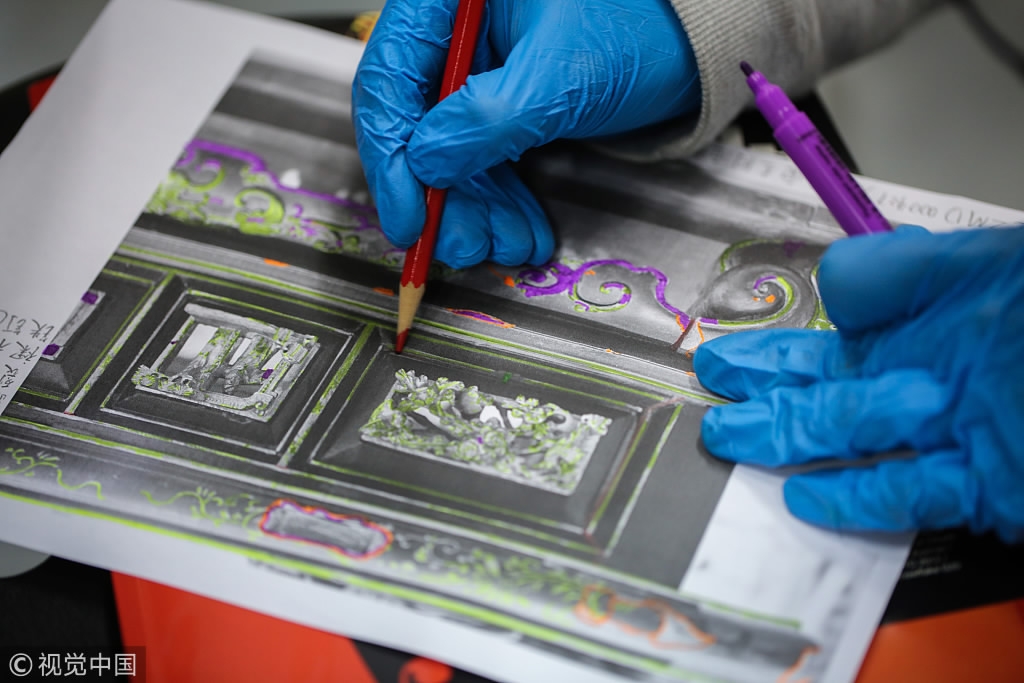

Thanks to the 2016 documentary Masters in Forbidden City, a lot of people now know about the conservators - people in a relatively young profession which most museums in China don't have. They are an in-house restoration department and since 2017, the Institution of Art Work Restoration and Research Center at the Guangzhou Academy of Fine Art began to restore Teochew wood carving. /VCG Photo.

Teochew wood carving, also called Chaozhou wood carving in Chinese, is a form of carving that originated in South China during the Tang Dynasty. It is also is a UNESCO national intangible culture heritage. Compared with restoring a painting, the 3-dimensional wood-carvings are incredibly difficult for conservators to work on. /VCG Photo

The conservation of these art works requires an overlapping expertise of art history, anthropology, physics, chemistry and conservation with modern technology. Recently, growing numbers of young technicians who used to study abroad came back to China and joined the conservation team. Technicians need to repair the art work with respect, meaning they need to keep every detail that gets removed from the art work, including the dust and the cotton that has been used during the repair process. /VCG Photo

Besides playing a role in understanding and sharing the history locked within the objects in their care, conservators also treat these woods with cutting-edge technology. After careful analysis and discussions, conservators use ultraviolet ray technology to analyze the condition of the wood and then use nanotechnology skills to clean it. /VCG Photo

At the beginning of the restoration process, technicians need to carefully analyze every detail of the work and then make a series of drafts. /VCG Photo

Copyright © 2018 CGTN. Beijing ICP prepared NO.16065310-3
Copyright © 2018 CGTN. Beijing ICP prepared NO.16065310-3